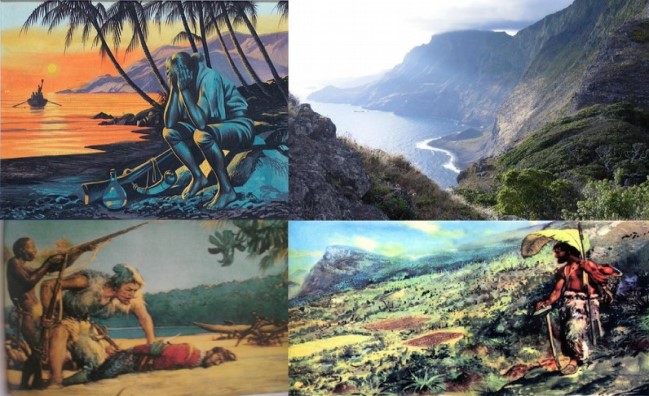In the late summer of 1703, two English ships, the ‘St George’ and the ‘Chink Ports’, were preparing for an expedition to the Pacific Ocean. The captain of the ‘St George’ was privateer, pirate, and explorer William Dampier. The second ship was commanded by Captain Straddling. The ships left England in September and 12 months later, rounding Cape Horn, approached the archipelago of Juan Fernandez, which is off the coast of Chile.
There the ships entered the bay of the largest island, ‘Massa a Tierra’, to make necessary repairs after a long stay at sea. The sailing master of the Cinque Ports was a Scottish sailor, Alexander Selkirk. A few days later he received orders to prepare the ship for sailing. But objected that the rigging was not yet ready and it would take a few more days to complete the work. This led to an argument with Captain Straddling, and Selkirk was punished by being stranded on a deserted island.
Five years later, in August 1708, another expedition set out from Bristol. Two ships, the ‘Duke’ (320 tons, 30 guns) and the ‘Duchess’ (260 tons, 26 guns), were commanded by an experienced sailor, Sir Woods Rogers, who was later appointed Governor of the Bahamas. One of his navigators was the aforementioned William Dampier.
The ships crossed the Atlantic, capturing several Spanish merchant ships on route. Having rounded Cape Horn, on 2 February 1709 they found themselves near one of the Juan Fernandez Islands. During the night the sailors saw a fire on the shore, and in the morning a small party traveled to the island. There they discovered a man dressed in a goatskin. It was the disgraced sailor Alexander Selkirk.
All these years he had survived on the island, eating fish, fruit, and the meat of wild goats. William Dampier recognized him and confirmed that Selkirk had been a sailing master on the “Cinque Ports”. Captain Woods Rogers appointed Selkirk to the same position on his ship.
Selkirk had become so addicted to raw meat during his years on the island that cooked food caused him to vomit. He was fed corned beef.
They returned home on 12 February, and on 17 October 1709, Selkirk was in London. He had been absent from his homeland for over eight years.
William Dampier published his ‘Traveler’s Notes’ in which he described the story. Three years later, Sir Woods Rogers published ‘A Journey Round the World’, repeating the story.
Seven years later, in 1720, the writer Daniel Defoe was fascinated by the story, which later formed the basis of his classic novel, “The Adventures of Robinson Crusoe”.
He transported his hero from the Pacific Ocean to the Caribbean Sea, settled him on an island near Trinidad, and made him a victim of pirates and a hurricane. These were the fantasies of the great writer.
A year later, in 1721, Alexander Selkirk, a Scottish sailor, died. He was forty-five years old.

Be First to Comment